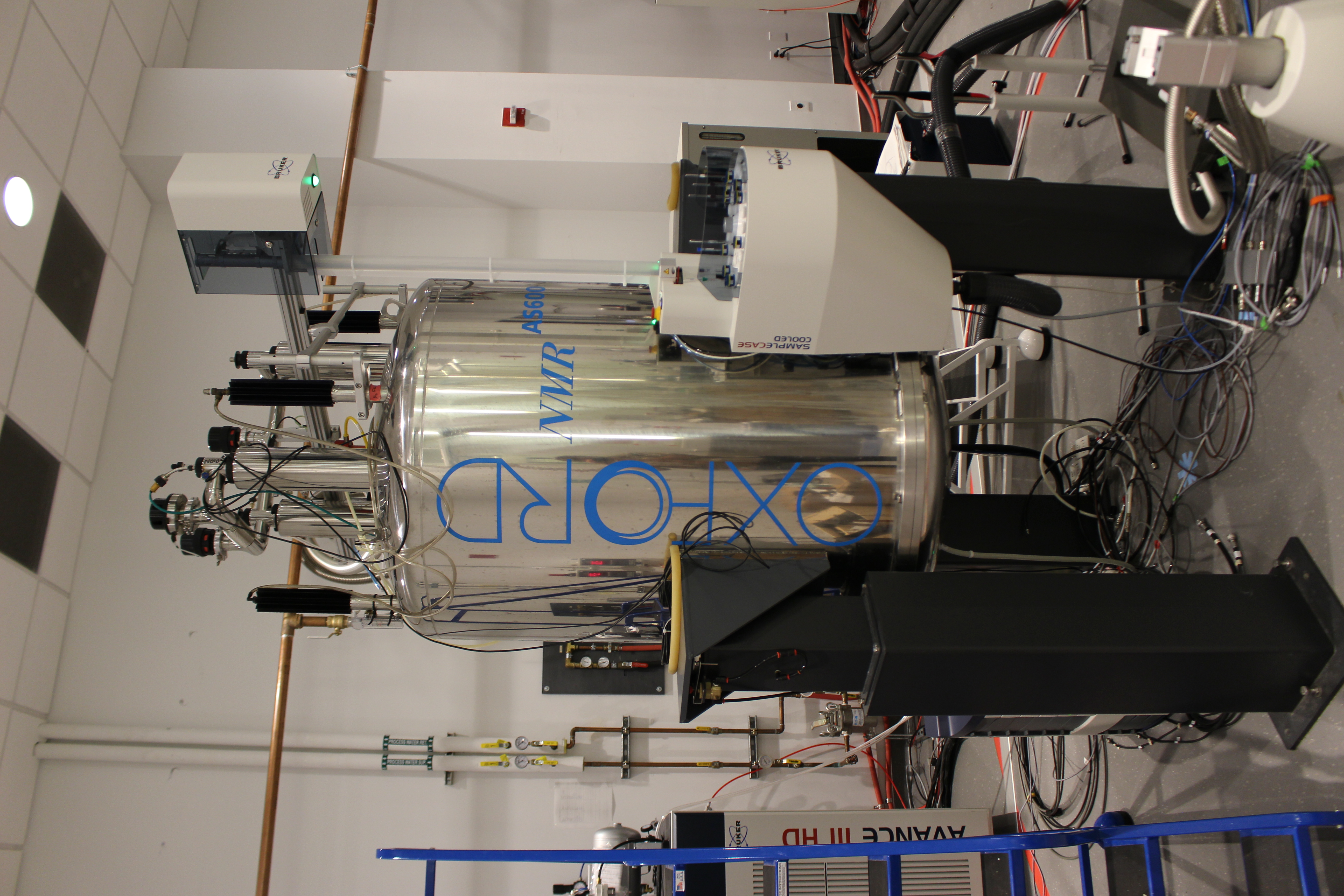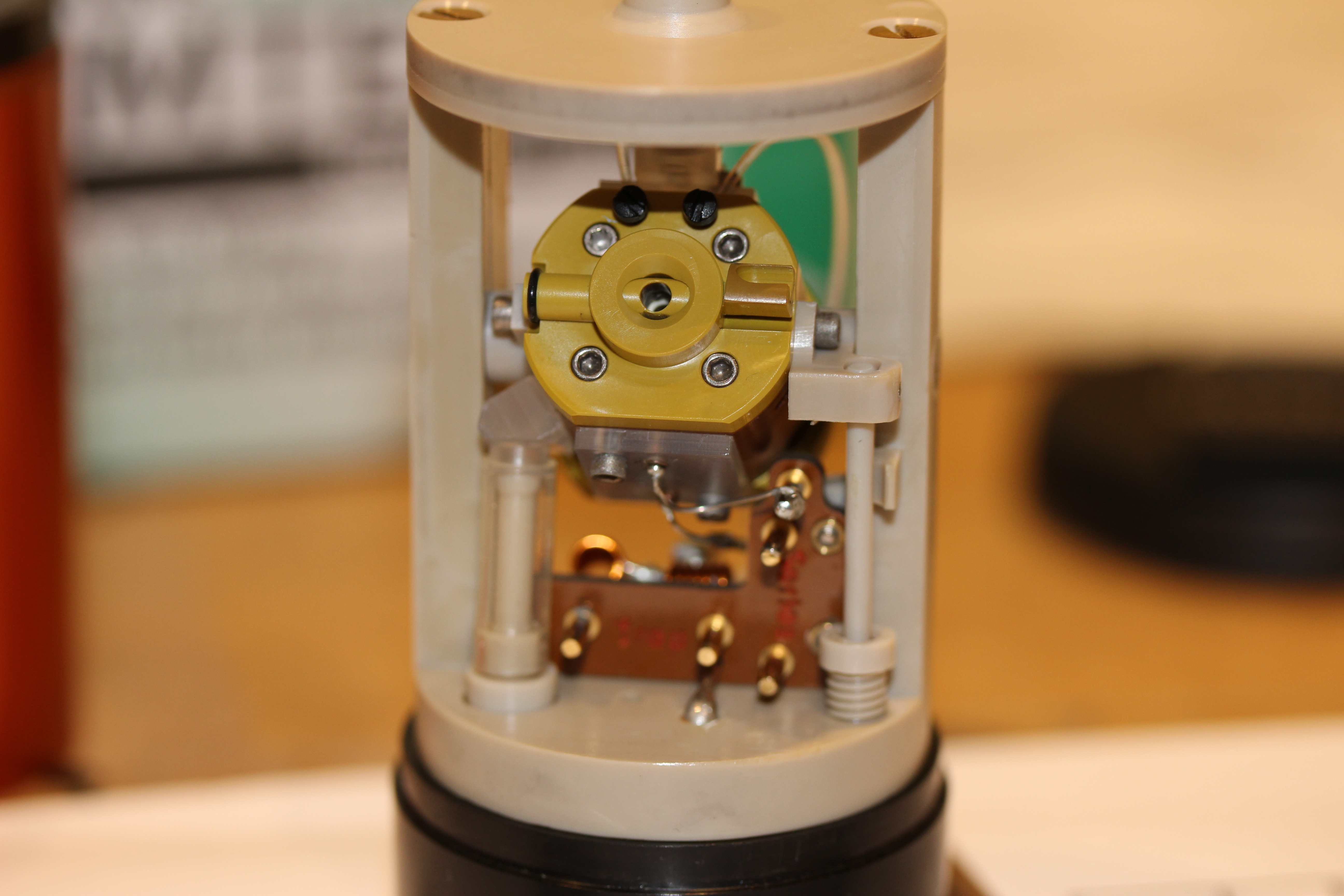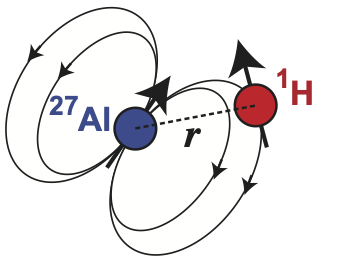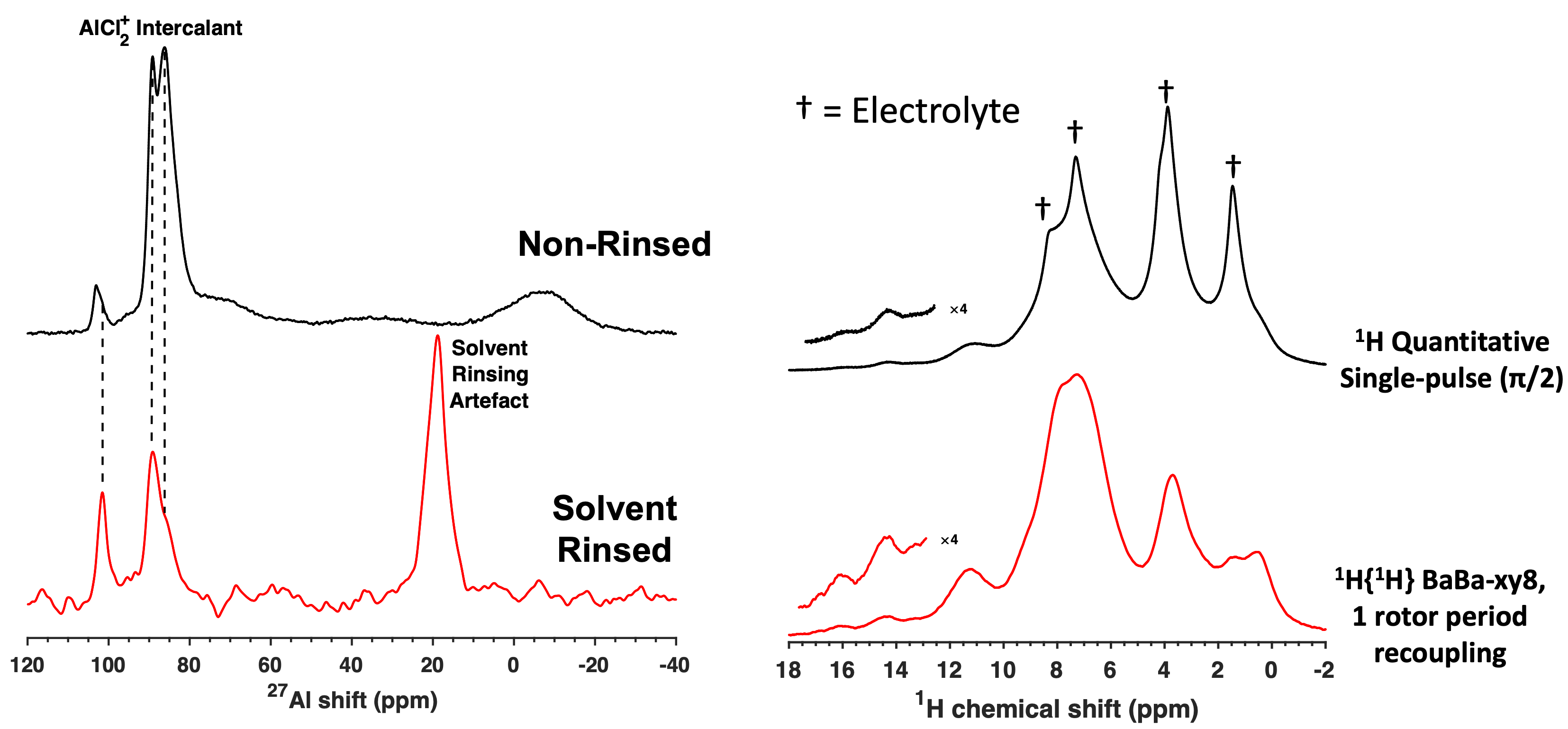NMR Techniques
We aim to develop and utilise state-of-the-art NMR techiques for the analysis of energy storage materials.
We aim to develop and utilise state-of-the-art NMR techiques for the analysis of energy storage materials.
NMR is at the heart of our group. We use many techniques across both solid- and liquid-state NMR to learn about and characterise energy storage materials.


I favour the use of dipolar-mediated correlation experiments. Many of the systems I work with are proton-rich, allowing the transfer of magnetisation from the proton ‘bath’ to other spin-active nuclei within sub-nanometer distances. The dipolar coupling constant scales with the inverse of the internuclear distance cubed \(D \propto \frac{1}{r^{3}}\), therefore is an effective through-space probe for complexed ions such as aluminium in organic battery systems. The spin-locking time can also be modulated to approximate through-bond interactions if needed. Performing multidimensional versions of these experiments enables confident determination of internuclear interactions with molecular specificity.

Using these dipolar-mediated experiments we have been able to characterise complexation, perform signal assignments, filter out unbound and mobile signals from spectra, and simply reduce experiment time for collecting data of low-abundance/low-gamma nuclei. The dipolar-mediated experiments have been of exceptional use for characterisation of battery electrodes without treating the sample after harvesting (e.g. washing away electrolyte with solvent) which avoids any undesired changes to the electrode from its true state.

The application of these NMR methodologies to the study of batteries can be seen in our previous works, particularly our new Journal of Magnetic Resonance article: “Revealing Impacts of Electrolyte Speciation on Ionic Charge Storage in Aluminum-Quinone Batteries by NMR Spectroscopy”.

The systems I have studied lab have covered a wide range of different nuclei, including: 1H, 7Li, 11B, 13C, 19F, 23Na, 27Al, 29Si, 31P, 67Zn, 77Se, 113Cd, 207Pb, among others.